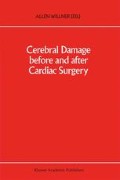Abstract
The necessity to perform cardiopulmonary bypass (CPB) which permits open cardiac surgery has been considered one of the most significant medical developments of the 20th century. From animal laboratory experiments by physiologists more than 150 years ago to the clinical applications in the early 1950s, open-heart surgery with CPB has grown to the extent that more than 700 hospitals in the United States perform approximately 350,000 CPB procedures each year. Whereas congenital or valvular surgery predominated the early CPB experience, the advent of the coronary artery bypass graft (CABG) operation in the early 1970s has been largely responsible for the extraordinary growth in the number of cases. Despite a trend in recent years towards percutaneous transluminal coronary angioplasty (PTCA) procedures by cardiologists to treat coronary artery disease (which does not require use of CPB) the CABG operation remains the most frequent requirement for CPB today. The fact that many of these patients are middle-aged and actively employed further emphasizes the need for optimum cerebral protection during CPB.
Access this chapter
Tax calculation will be finalised at checkout
Purchases are for personal use only
Preview
Unable to display preview. Download preview PDF.
References
Henry JP, Meehan JP. The Circulation. Chicago: Year Book Medical Publishers 1971; p. 133.
Reed C, Stafford TB. Cardiopulmonary Bypass, 2nd Edition. Houston: Texas Medical Press 1985; p. 27.
Sarnquist FH. Neurological outcome after “low flow, low pressure” cardiopulmonary bypass. In: Hilberman M (ed) Brain Injury and Protection during Heart Surgery, Boston: Martinus Nijhoff Publ, 1988; p. 13.
Hill JD, Aguilar MJ, Baranco A et al. Neuropathological manifestations of cardiac surgery. Ann Thorac Surg 1969; 7: 409.
Royston D. Blood cell activation. Sem Thorac Cardiovasc Surg 1990; 2: 341.
Bull BS, Korpman RA, Huse WM et al. Heparin therapy during extracorporeal circulation: I. Problems inherent in existing heparin protocols. J Thorac Cardiovasc Surg 1985; 69: 674.
Bull BS, Huse WM, Brauer FS, et al. Heparin therapy during extracorporeal circulation: II. The use of a dose-response curve to individualize heparin and protamine dosage. J Thorac Cardiovasc Surg 1975; 69: 685.
Kurusz M, Schneider B, Brown JP. Filtration during open-heart surgery: Devices, techniques, opinions and complications. Proc Am Acad Cardiovasc Surg 1983; 4: 123.
Kurusz M, Conti VR, Arens JF et al. Perfusion accident survey. Proc Am Acad Cardiovasc Perfusion 1986; 7: 57.
Butler BD. Biophysical aspects of gas bubbles in blood. Med Instrument 1985, 19: 59.
Blauth CI, Smith PL, Arnold JV et al. Influence of oxygenator type on the prevalence and extent of microembolic retinal ischemia during cardiopulmonary bypass. Assessment by digital image analysis. J Thorac Cardiovasc Surg 1990; 99: 61.
Swan H: The improtance of acid-base management for cardiac and cerebral preservation during open-heart operations. Surg Gynecol Obstet 1984; 158: 391.
Kirklin JW, Barratt-Boyes B. Hypothermia, circulatory arrest and cardiopulmonary bypass. In: Cardiac Surgery. New York: John Wiley, 1985; p. 29.
Kurusz M, Conti VR. Cerebral protection during cardiopulmonary bypass: Devices and techniques to prevent air embolism. In: Willner AE, Rodewald G (eds) Impact of Cardiac Surgery on the Quality of Life, Neurological and Psychological Aspects. New York: Plenum Press, 1990; p. 255.
Editor information
Editors and Affiliations
Rights and permissions
Copyright information
© 1993 Springer Science+Business Media Dordrecht
About this chapter
Cite this chapter
Kurusz, M. (1993). Perfusion related parameters affecting cerebral outcome after cardiac surgery. In: Willner, A.E. (eds) Cerebral Damage Before and After Cardiac Surgery. Developments in Critical Care Medicine and Anesthesiology, vol 27. Springer, Dordrecht. https://doi.org/10.1007/978-94-011-1852-1_4
Download citation
DOI: https://doi.org/10.1007/978-94-011-1852-1_4
Publisher Name: Springer, Dordrecht
Print ISBN: 978-94-010-4818-7
Online ISBN: 978-94-011-1852-1
eBook Packages: Springer Book Archive

